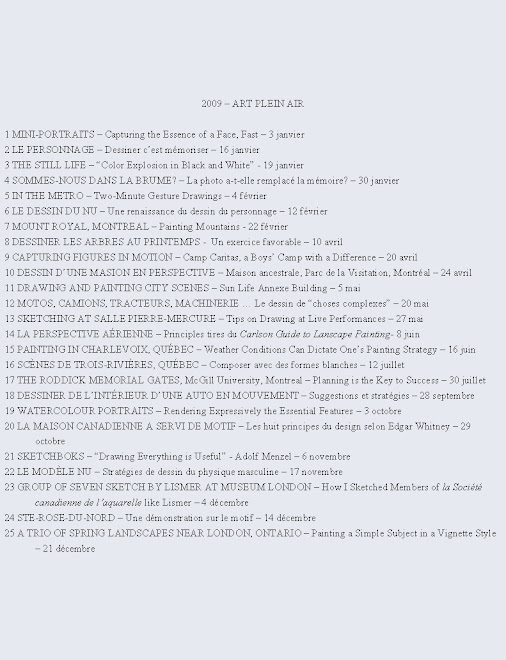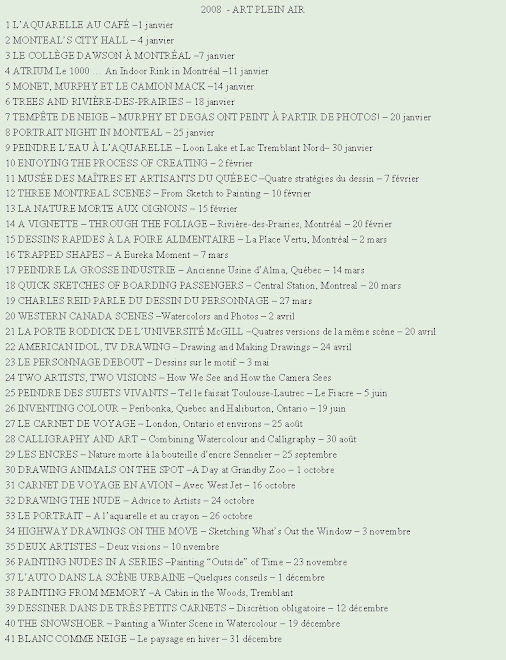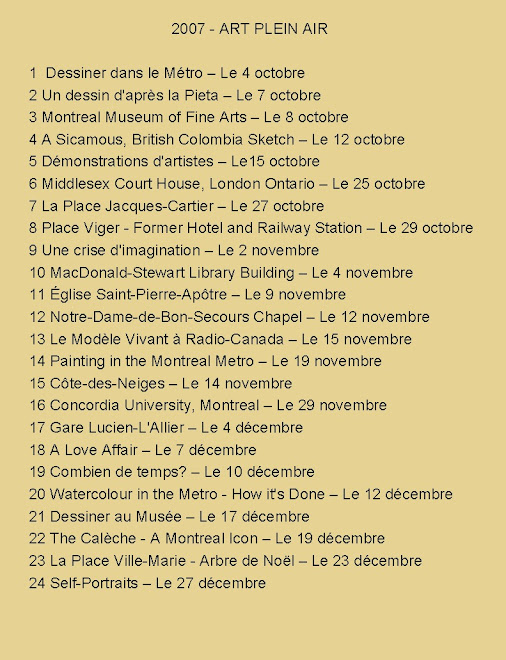 Have you ever painted a motif – a difficult subject - and reflected: “How did I succeed in so short a time?” Or have you ever looked at a piece of art and wondered how the artist with such bravura was able to capture the essence of the subject in a seemingly brief time?
Have you ever painted a motif – a difficult subject - and reflected: “How did I succeed in so short a time?” Or have you ever looked at a piece of art and wondered how the artist with such bravura was able to capture the essence of the subject in a seemingly brief time?When I return from a life drawing session and look at my sketches, very often the most successful ones were executed in five minutes or less. The nudes painted during longer poses are not necessarily the best ones. Why? Let me explain by interjecting thoughts and quotes by John Berger in the essay “That Which is Held” (1982)*
Berger says that since the nineteenth century most accept the view of a unilinear or uniform ‘flow’ of time. Yet, subjectively we can experience time as passing at different rates. Just think. When one is immersed in a totally exhilarating experience, say a stimulating dance or when watching an immensely captivating sport match, time “seems” to pass by swiftly. The opposite is true when anxious and the last one at the end of a long queue waiting to be served.
Berger says: “The deeper the experience of a moment, the greater the accumulation of experience. That is why the moment is lived as longer. The dissipation of the time-flow is checked. The lived durée is not a question of length but of depth or density.” Therefore, if I have accumulated enough experience in doing something such as painting a certain subject, and execute this “quickly” I am in effect “compressing” time to coin a phrase. This, I reason, is what I do and experience when I paint a series of a live model properly proportioned and well designed (a complex subject) in a very short time. The series of five nudes (illustrated here) were three minute poses while the model posed for five minutes for the series of four poses.

How do I do this? Time and experience. There are no shortcuts. I have been drawing the figure regularly for close to forty years, both nudes and clothed figures. Therefore, on a “good” night when I am in “flow” or “in the zone” I might produce such a series. I first draw in pencil precisely the main shapes of the figure. Then, using one natural hair brush and a few watercolor pigments I add the color using the lines as a guide but mostly I draw with a brush and paint.
The advantage of painting a series on an elongated horizontal paper format is that I can link one subject to the other and even now and then go back and forth from one pose to another to add or adjust a color, form or detail. Because watercolor dries at different rates this strategy is very helpful because, for example, one can only add a small detail such as a dot for an eye over a painted area once this section has dried.
To arrive at such a pleasing exhilarating experience in art where “time seems to evaporate” and be inconsequential one has to draw, draw, draw, practice, practice, practice. Just as the musician, dancer, actor or race car driver. Then, when it is “time” to perform, paradoxically “unilinear time” ceases to be of importance. One is 100% “in the zone” and creating. “The moment lived is longer”. I am painting “outside of time”. And what joy!
*Selected Essays, John Berger, edited by Geoff Dyer
Raynald Murphy sca









Aucun commentaire:
Enregistrer un commentaire